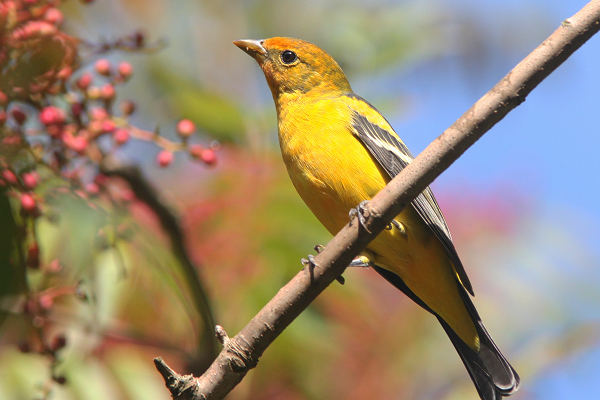
Location: San Diego Zoo, San Diego, CA
Date: 2005-10-15
Lens: Canon 300mm IS F4 + 1.4x II Converter

 Western Tanager
Piranga ludoviciana
Western Tanager
Piranga ludoviciana
 Description
DescriptionThis bird was first recorded on the Lewis and Clark expedition (1803-1806). A treetop dweller that feeds on insects, berries, and fruits. Its bright colors are due to carotenoid pigments, which it gets from its food. Migrates south to Mexico and Central America in winter.
General: Immature male similar to female. 6.25 to 7 inches in length.
Male: Yellow underparts, neck, and rump. Bright red head and throat. Black wings with yellow shoulder and white wingbar. Black back and tail. Pointed, stout, conical pale bill.
Female: Yellow underparts, head, and rump. Gray back. Two whitish wingbars.
Open coniferous forests.
 Nesting
Nesting3-5 blue-green eggs with speckles and a 13 day incubation period. Nestlings take 13-15 days to fledge. The nest is a woven, open cup made from rootlets, weeds, and bark strips. It is built in the fork of a branch of a coniferous (Douglas fir, spruce, pine), or oak tree.